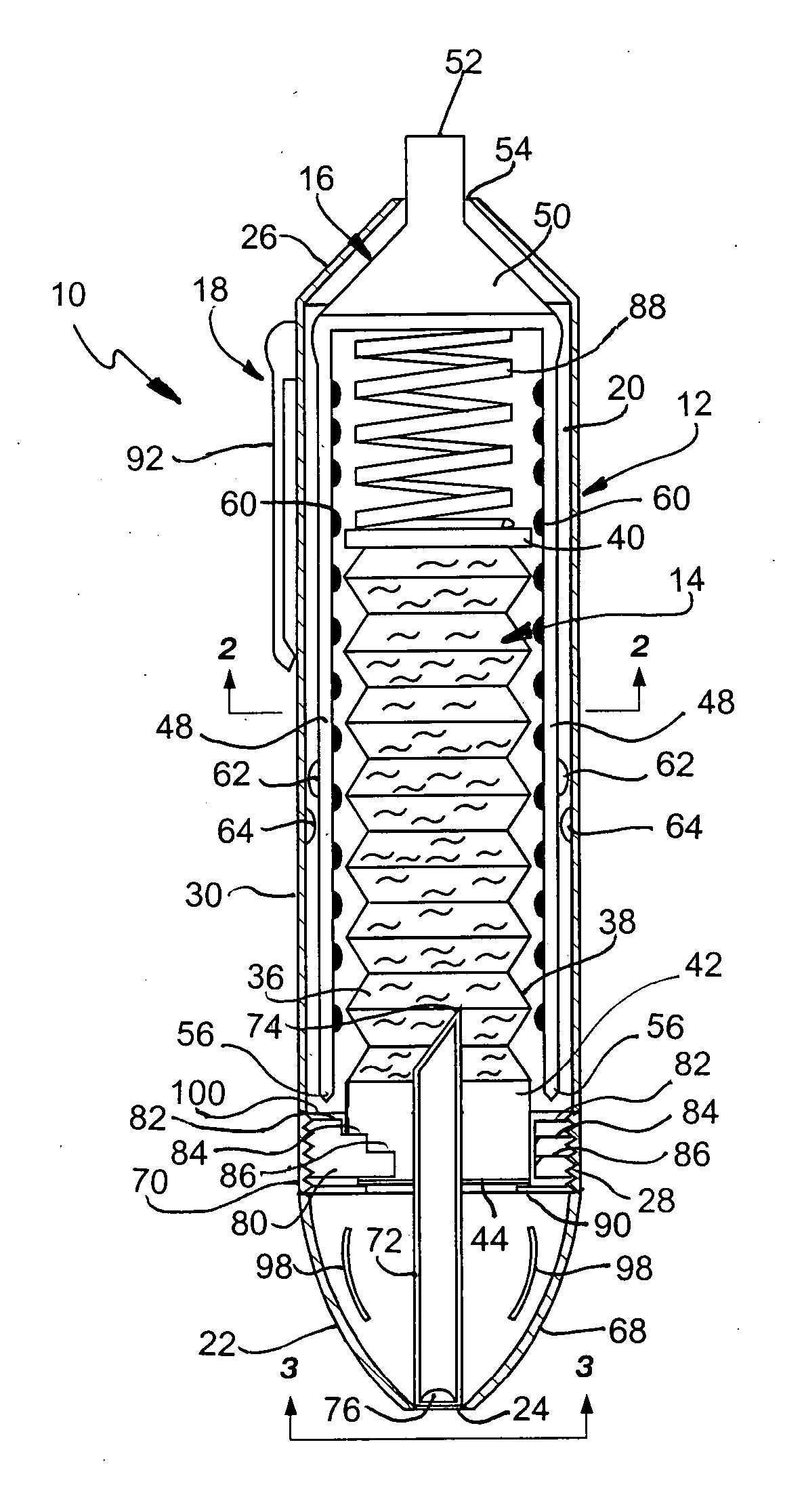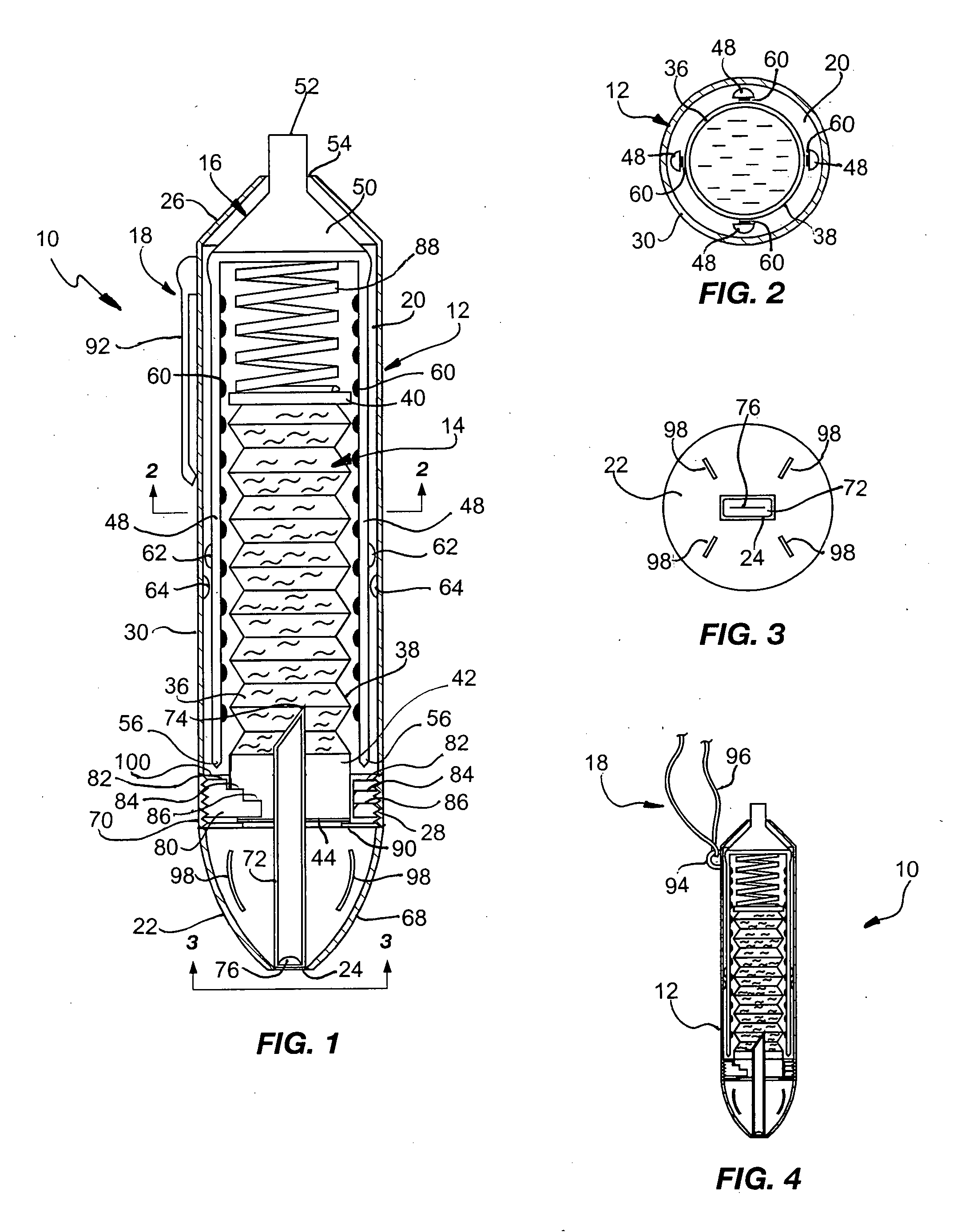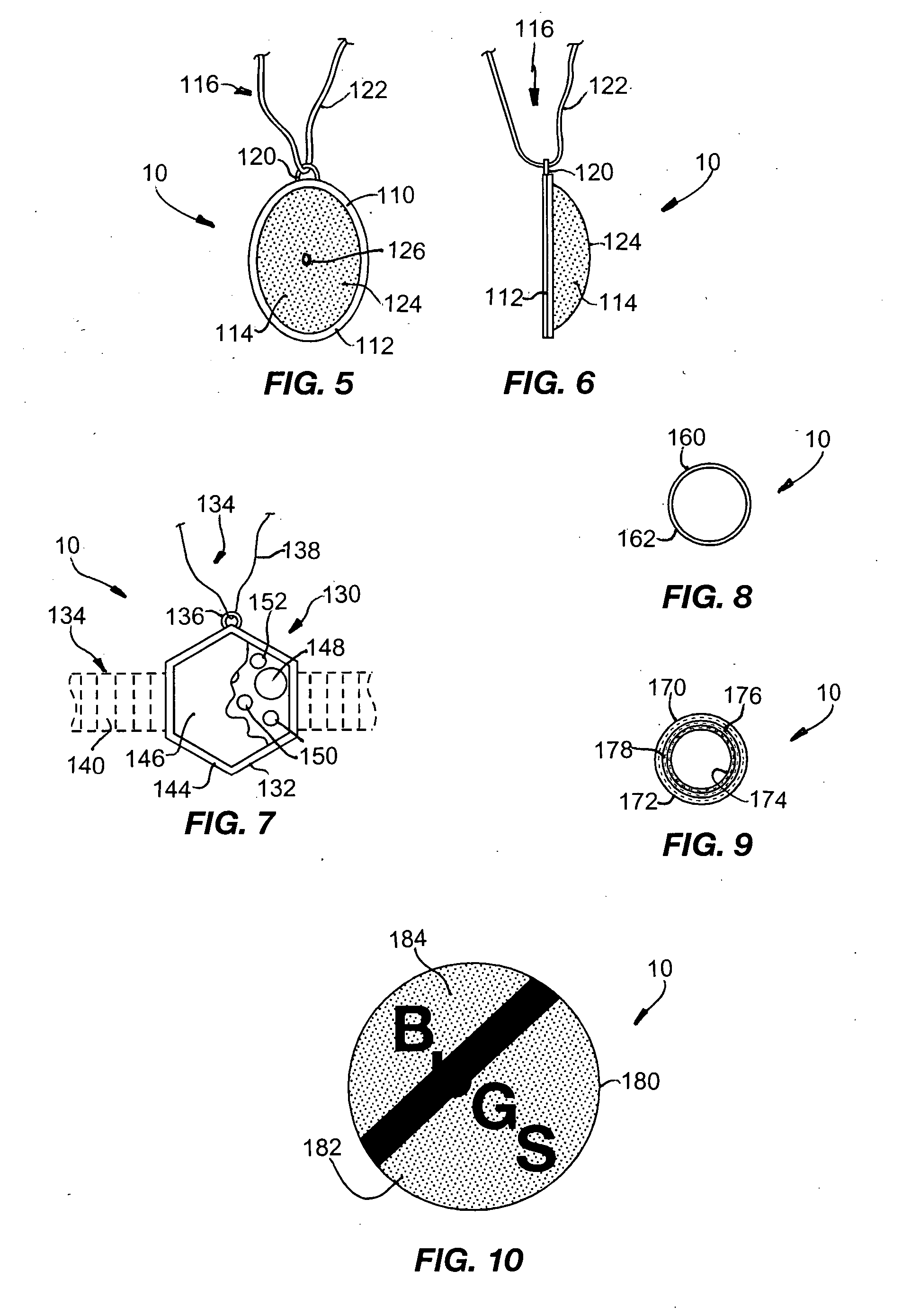Wearable hand sanitation devices
- Summary
- Abstract
- Description
- Claims
- Application Information
AI Technical Summary
Benefits of technology
Problems solved by technology
Method used
Image
Examples
third embodiment
[0047] the hand sanitizing device 10 of the present invention is shown in FIGS. 5 and 6, which is formed in the manner of an item of jewelry, specifically a necklace or pendant 110. The device 10 generally comprises a housing 112 which retains a reservoir 114 of antimicrobial agent. The housing 112 has an attachment member 116 shown here, by way of example, as a ring 120 through which a string 122, rope, chain, lanyard or other similar item may be positioned for attachment of the device around the user's neck, wrist, waist, arm or the like.
[0048] The reservoir 114 for retaining the antimicrobial agent may take any one of several forms. For example, the reservoir may be an absorbent material that is saturated with an antimicrobial agent so that when the reservoir 114 is rubbed over the hands, an amount of agent is released from the reservoir 114 onto the hands. Alternatively, the reservoir 114 may be a solid material that contains or is formed from an antimicrobial agent, such as tri...
PUM
 Login to View More
Login to View More Abstract
Description
Claims
Application Information
 Login to View More
Login to View More - R&D
- Intellectual Property
- Life Sciences
- Materials
- Tech Scout
- Unparalleled Data Quality
- Higher Quality Content
- 60% Fewer Hallucinations
Browse by: Latest US Patents, China's latest patents, Technical Efficacy Thesaurus, Application Domain, Technology Topic, Popular Technical Reports.
© 2025 PatSnap. All rights reserved.Legal|Privacy policy|Modern Slavery Act Transparency Statement|Sitemap|About US| Contact US: help@patsnap.com



